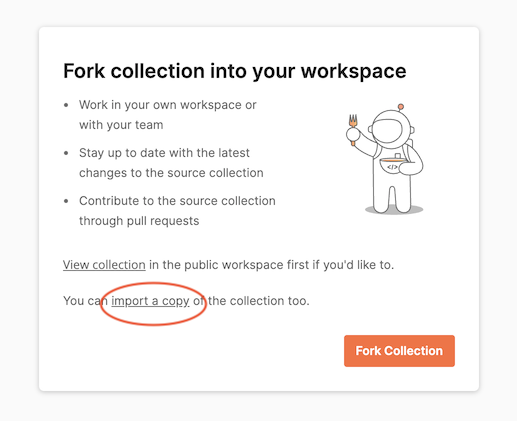Download the Postman collection
There are two different methods you can use to retrieve a Postman collection into your workspace:
-
Fork the collection into your workspace. The Postman application retains an association between the source and your fork. If Ping Identity changes the source collection, you can pull those changes into the fork in your workspace.
-
Import the collection into your workspace. This is a one-time transfer and retains no association to the source collection.
Steps
To retrieve the collection:
-
Click Run in Postman.
-
At the prompt, click Fork Collection at the bottom of the dialog or click import a copy near the bottom of the dialog.
You must be signed on to your Postman account to retrieve the collection.

-
Follow the on-screen instructions to fork or import the collection. You might be prompted to open your Postman app and to select a Postman workspace for the retrieved collection.
When you fork a Postman collection, you create a copy of it in a different workspace. Forking a collection creates a linked version that synchronizes with its source collection.
You’ll see this synchronization when you click the ellipsis icon on the forked collection. If changes are available, the context menu displays a Pull changes button, which you can click to compare the fork to the source collection and pull changes into your fork. You can also watch the collection so that you are notified when the source changes.
If you import a collection, a copy is created with no link back to the source. The collection is static, which might be useful in some situations. For example, if you intend to keep and consume only portions of the collection, a link back to the source is not needed.
But you don’t have to choose between these two methods. You can fork a copy to track the source and import a copy for experimentation.
The environment downloaded with the collection of requests contains every variable used in the collection. Each request that creates a new object with an ID has a script that:
-
If not available, creates an environment variable unique to that service.
-
Assigns the id of the newly created object to that environment variable.